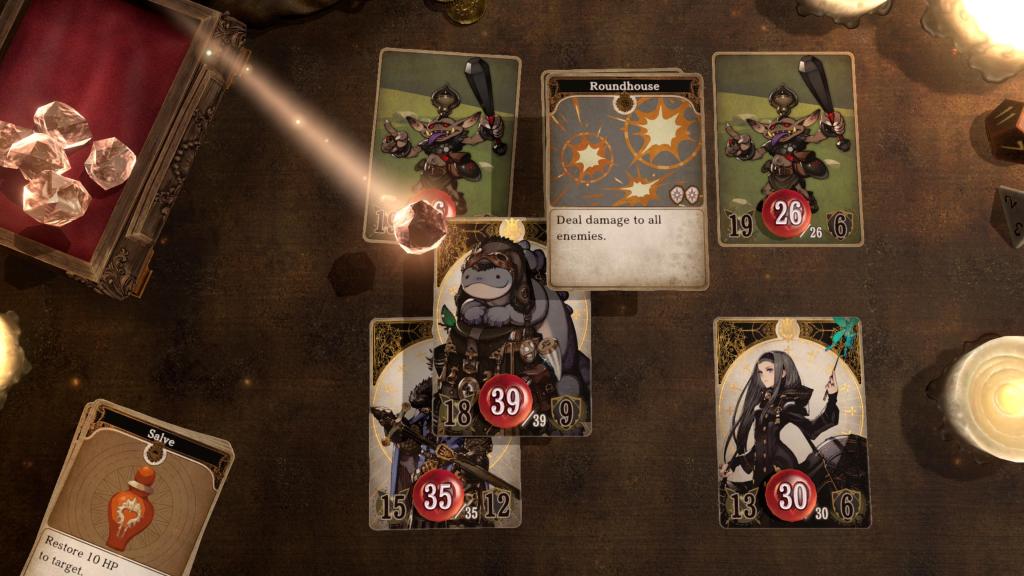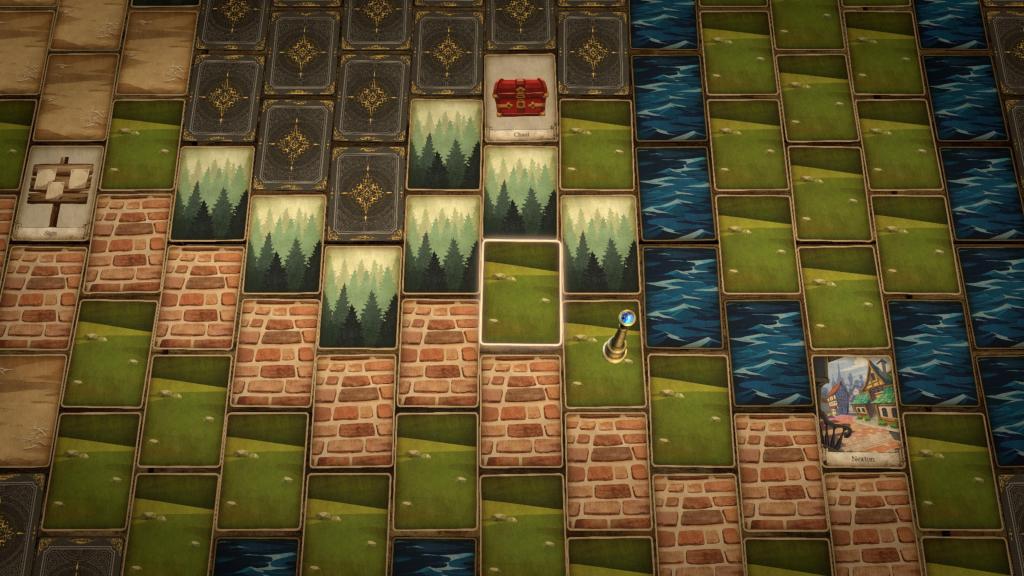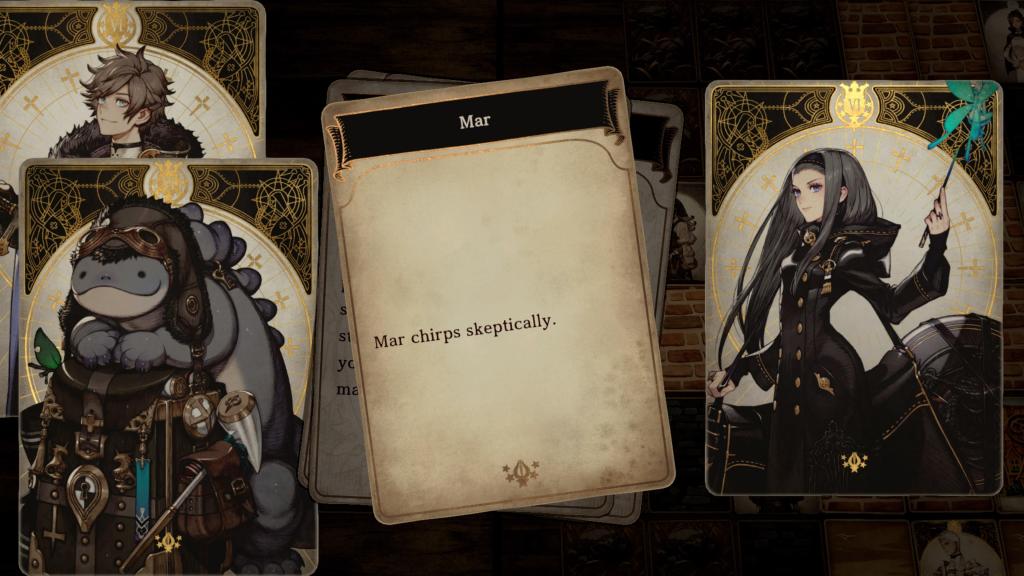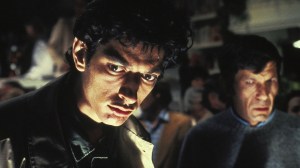The bones of RPGs are laid bare in Voice of Cards: The Isle Dragon Roars, the new role-playing game from Square Enix. Players might assume that Voice of Cards features card-based gameplay similar to Card Hunter or Card of Darkness with such a title. Contrary to that assumption, Voice of Cards features no deckbuilding nor random draw mechanics. Created by Drakengard/Nier franchise stalwarts — creative director Yoko Taro and executive producer Yosuke Saito — Voice of Cards instead wraps traditional JRPG gameplay in a unique presentation, using cards as storytelling tools.
Videos by ComicBook.com
Voice of Cards represents every aspect of its world and gameplay with cards. There are character cards, monster cards, item cards, and skill cards. The maps are made out of cards, face-down in dangerous areas until the player moves close enough to flip them over and reveal their secrets. The conceit extends to the ways the player interacts with the game. The user interface and menus in and out of combat are all represented with cards. The game even conveys dialogue in the same manner, with players able to hold down a button to peek slightly at what effects a chosen dialogue option could have on the situation.

The only non-card visual elements are a single pawn-like figure representing the player on the map, a separate playboard that comes down when combat begins, and the dice rolled for some skill effects. A gamemaster describes every story beat and voices every character as someone filling that role in a tabletop setting might. The approach is reminiscent of the exploration portions of Unlimted Saga and the more fully tabletop aesthetic of Crimson Shroud.
One might think all of that would detract from the immersion. Instead, it creates a relaxed atmosphere that invites the player to fill in some of the presentational gaps with their imagination, again evoking the feel of tabletop gaming. Todd Haberkorn as the gamemaster isn’t entirely convincing when trying to “act” as the characters, but Voice of Cards gets a surprising amount of motion and expression from its cards. Cast a wind spell, and the monster card will fly up in the air. Cards move energetically and fall in peril during story scenes. A card flip might reveal a different version of Kimihiko Fujisaka’s gorgeous character art in the most dramatic moments.
Building the world out of cards means that players rarely forget that they are playing a game. Taro and his team lean into this, leaving the mechanics and tropes that serve as the architecture of the RPG genre in plain sight like exposed brick. Where most JRPGs roll their dice “behind the screen,” in tabletop parlance, and spit out numbers after the fact, players see every dice roll a character or monster makes during the game, with many abilities referencing the player or the GM in their text. Gems, the currency used to cast spells and activate other combat abilities, are not represented by an abstract number but by physical gemstones dropping into a container on the side of the battle tray where combat scenarios play out.

On its surface, Voice of Cards‘ story is a simple as it comes for an RPG. A dragon terrorizes the land, and the queen offers to reward any hero brave and talented enough that they slay the creature. Yet here, too, Voice of Cards exposes and plays with the player’s expectations. The main protagonist isn’t a brave altruist but an opportunist out only for the reward. The player’s party is frequently at odds with and contrasted against a trio of noble white-clad heroes from the Ivory Order. The latter group behaves much closer to typical fantasy hero archetypes but shows little warmth towards those they supposedly protect. The writers also get in other little metatextual jokes, poking fun at NPCs who only repeat a single phrase and impractical dungeon designs.
Additionally, players collect cards for every character they meet and each monster they fight. Those cards explain each character or creature’s history. Interact with said individual or monster type enough times, and you’ll unlock a flipside story, usually revealing a dark twist like something out of a JRPG Twilight Zone. But, without spoiling much of the core narrative, these jokes are hardly the most significant subversion in store for players.
Voice of Cards: The Isle Dragon Roars will likely be a hard sell to anyone who expects anime cutscenes or immersive visuals from their RPGs. It also can’t compare with top-tier JRPGs for length either, clocking in at around 12 hours. And the combat — while fast-paced and appropriately simple given the game’s dedication to creating an intimate and uncomplicated atmosphere — does begin to feel repetitive towards in the game’s back half, especially in dungeons populated almost entirely by monsters with the same elemental weaknesses. There’s also the fact that, by avoiding card-based mechanics, the game doesn’t do anything a more straightforward JRPG couldn’t. The aesthetic is the hook, and if it doesn’t appeal, there’s little else on offer.

But those who take a chance on Voice of Cards might be surprised. Its tabletop style is endearing and a testament to the idea that gripping adventure transcends the need for cinematic cutscenes. Voice of Cards puts the “game” back in “role-playing game” in fun, compelling, and thoughtful ways that will delight players throughout their time with it.
Rating: 4 out of 5
Voice of Cards: The Isle Dragon Roars is available now for PC, PlayStation 4, and Nintendo Switch. The publisher provided a game code for the purposes of this review, and it was reviewed on a base model PlayStation 4 and PlayStation 5.








